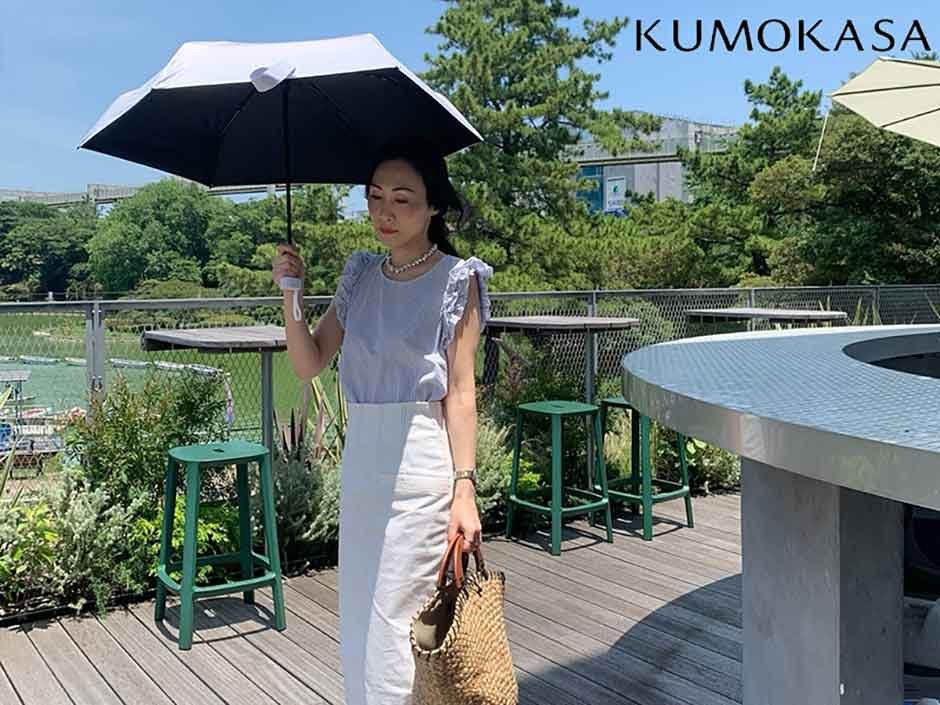In Japan, skincare is not just a routine—it’s a daily ritual, a philosophy, and for many, a lifelong commitment. From meticulously layered products to consistent sun protection, the Japanese approach to skincare is holistic and preventative. And while sunscreen, serums, and moisturizers dominate beauty shelves, there’s one elegant yet essential item that often goes unmentioned in global skincare conversations: the parasol.
Known in Japan as higasa, the parasol is more than just a charming accessory. It’s a powerful, physical barrier against the harsh UV rays that are one of the primary causes of skin aging, pigmentation, and long-term damage. In a country where beauty ideals favor even-toned, luminous skin and where summer sun can be intense and unforgiving, the parasol is as much a skincare tool as it is a style statement.
If you’re serious about skincare—and especially if you’re living in or visiting Japan—here’s why your beauty routine isn’t truly complete without a おしゃれな日傘.
The Japanese Love for Fair, Healthy Skin
To understand the role of parasols in Japanese skincare, it helps to understand the cultural context. In Japan, sun protection has long been associated with beauty, refinement, and health. The aesthetic preference for clear, radiant, and even-toned skin has roots that go back centuries. Unlike in some Western cultures where tanned skin is often seen as healthy or fashionable, Japanese standards traditionally favor skin that is protected from sun damage.
This has given rise to an entire industry around UV protection—from long-sleeved summer clothing and sun gloves to SPF-infused cosmetics and, of course, parasols. These tools aren’t just for show—they reflect a cultural commitment to skin preservation, one that aligns perfectly with the modern beauty goal of preventing rather than correcting damage.
Why UV Protection Is Skincare’s First Line of Defense
Any dermatologist will tell you: sun exposure is the number one cause of premature skin aging. UVA rays penetrate deep into the skin, damaging collagen and causing wrinkles and sagging over time. UVB rays are responsible for sunburn and can directly damage skin cells’ DNA, increasing the risk of skin cancer.
Even on cloudy days, or during quick walks outside, your skin is still exposed to harmful radiation. That’s why in Japan, many women (and increasingly men) use parasols as an extra layer of protection, even when wearing sunscreen.
Think of it this way: sunscreen is like armor you wear, but a parasol is the shield you hold up to block the blows entirely.
Parasols: The Skincare Accessory You Didn’t Know You Needed
So what exactly makes a parasol such a valuable addition to your skincare routine?
1. Physical, Reliable Protection
Unlike sunscreen, which can wear off with sweat, time, or water exposure, a parasol creates consistent shade over your face, neck, and sometimes your shoulders. It blocks direct rays before they even touch your skin.
2. Reduces Heat Exposure
Summer in Japan can be brutally humid. Carrying a parasol not only blocks UV rays but also reduces the ambient heat on your skin, preventing heat-induced inflammation, which can worsen acne or rosacea.
3. Prevents Uneven Tanning and Pigmentation
Many people struggle with melasma, sunspots, or uneven skin tone due to chronic sun exposure. A parasol helps prevent these issues, especially in delicate areas like the cheeks and forehead, where pigmentation often appears first.
4. Preserves Your Skincare Investment
You may spend thousands of yen on moisturizers, essences, and SPF—but all that effort is compromised the moment your skin is overexposed to sunlight. A parasol is a way of protecting not just your skin, but the value of the products you’ve invested in.
Parasols in Japanese Daily Life
Unlike in the West, where umbrellas are mostly associated with rain, parasols are an everyday item in Japan. Especially during the summer months (June through September), it’s common to see people walking to work, shopping, or even hiking with a parasol in hand.
There’s also increasing awareness among younger generations about UV protection, making parasols popular among fashion-conscious teens and 20-somethings. Today’s parasols aren’t dowdy or old-fashioned—they’re chic, modern, and designed to be stylish companions to summer outfits.
Many Japanese parasols come with UV-cut certifications, indicating a UV protection rate of 90–100%. Some also function as dual-purpose 晴雨兼用傘, useful for both sunny and rainy days—ideal for the ever-changing weather in Tokyo, Osaka, or Kyoto.
Choosing the Right Parasol for Your Skin and Style
If you’re ready to incorporate a parasol into your skincare routine, here’s how to find one that suits your needs and look.
UV Protection Rating
Always look for parasols that specify a high UV cut percentage—ideally 95% or more. Many Japanese brands clearly label this, so you know exactly what level of protection you’re getting.
Size and Coverage
For optimal protection, the parasol should provide enough shade for your face and neck. Some come with slightly wider canopies designed to shield shoulders as well.
Interior Coating
Parasols with dark or reflective interior coatings help absorb or bounce sunlight away, reducing glare and keeping the space underneath cooler.
Style and Fabric
Light cotton parasols with lace or frills match romantic or vintage styles, while sleek polyester designs with metal detailing suit modern city wear. You can coordinate your parasol with your outfit just like you would a handbag or hat.
Portability
If you live in a busy city and rely on public transportation, a foldable, lightweight parasol is ideal. Many Japanese parasols come with carrying cases, making them easy to store in your bag.
The Skincare Ritual Goes Beyond Products
In Japan, skincare is more than what you put on your face—it’s a lifestyle. It includes what you eat, how you sleep, how you protect your skin from the elements, and how you move through your day.
Using a parasol is part of that ritual. It reflects mindfulness, respect for one’s body, and an awareness of natural rhythms. It’s not only about avoiding sunburn—it’s about preserving youthfulness, maintaining health, and doing so with grace and style.
Final Thoughts: Beauty That Begins with Protection
Incorporating a parasol into your skincare routine is one of the simplest, most elegant choices you can make. It’s non-invasive, affordable, and incredibly effective. And in Japan, it’s also a way to connect with a culture that deeply values beauty, health, and seasonal awareness.
As you refine your skincare habits, don’t forget the importance of what happens outside the bottle. A stylish parasol might not come with a pump or a serum label, but it offers one of the most powerful skincare benefits of all: protection.
This summer, whether you’re walking through Tokyo’s bustling streets, enjoying a peaceful afternoon in Nara Park, or heading to a seaside getaway in Okinawa, do it with your parasol in hand. Your skin—and your future self—will thank you.







